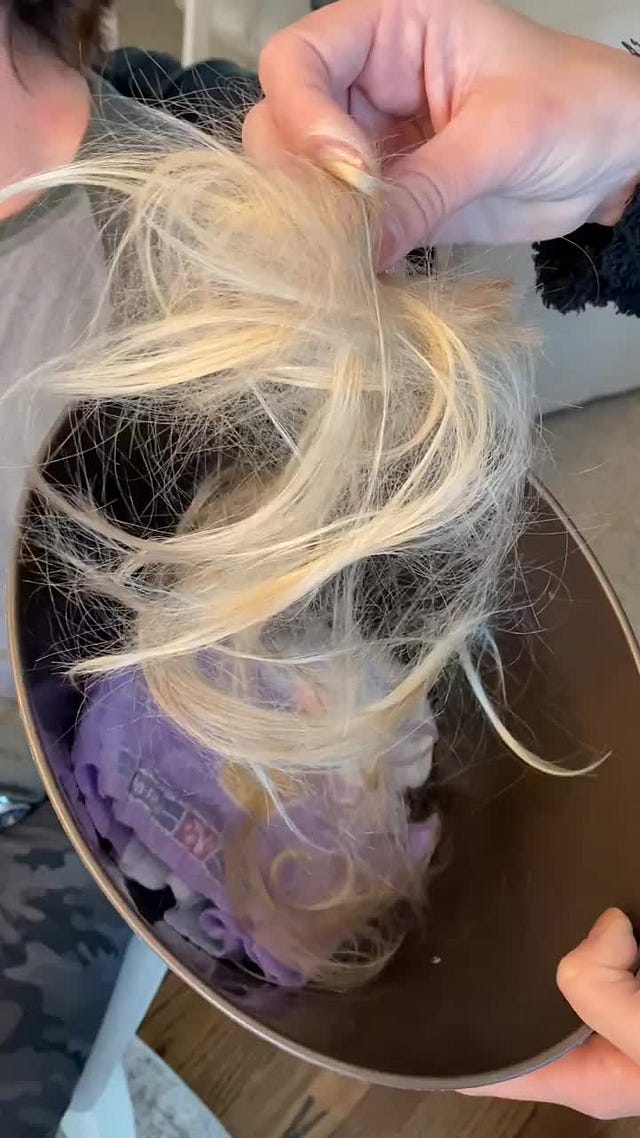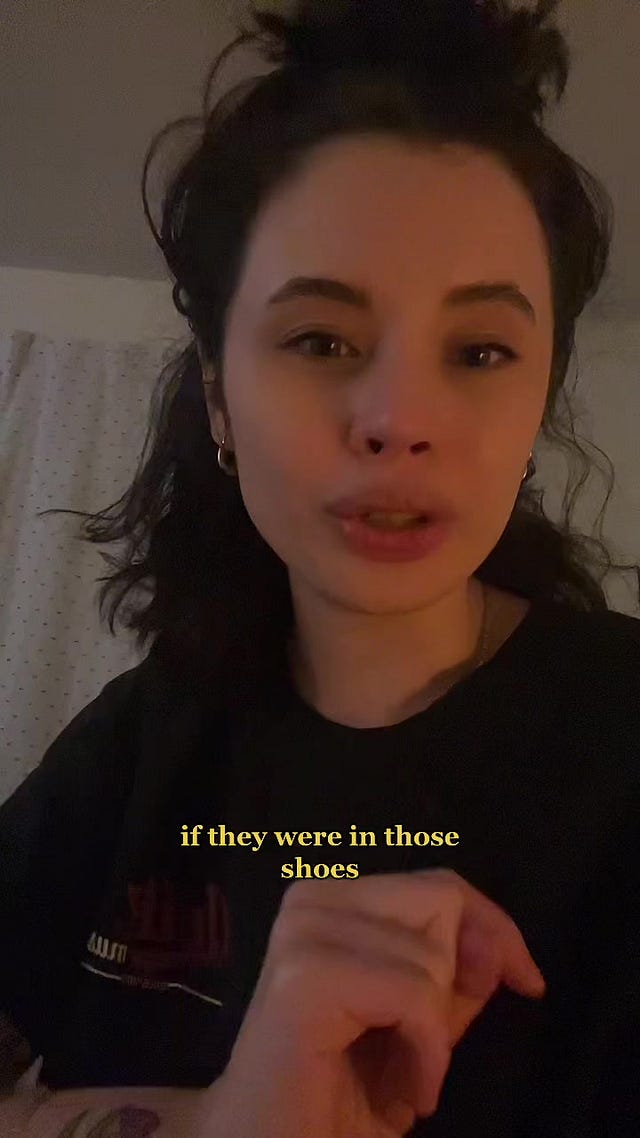Staged TikToks Are Weird AF
The Failed Two-Way Communication of Social Media & Our Ideal Imagine Response
I am fascinated by our behavior online.
Why do we react or respond to certain opinions or scenarios presented on our feeds?
Why do we react or respond (publically) at all?
Why do we feel it necessary to share our take on a small glimpse of a life shared online?
With this internal monologue of questioning, my brain isn’t far from queuing up the fantasy of interviewing someone like Bo Burnham or Hank Green, imagining what their perspective would be on our uncanny relationship to social media and the world through that lens.
The internet—followed by social media networks—opened the door to multiple generations pouring their interior life onto the digital landscape that is both intimate and public, private and open forum, broad discussions and echo chambers.
I am the first to say no one—including myself—is exempt from having a knee-jerk, punch to the gut, road-rage-level reaction to a comment or a piece of online content. I might be repeating myself here in my writing, but I feel a certain level of awareness about the behaviors and motivators behind how many of us attempt to communicate online. I know the negative comments left on my content are primarily a perspective lacking context on my message and intentions.
But I get angry, defensive, sassy at a negative comment meant for me. I have to practice patience and not overreact if I choose to respond at all.
Occasionally, I will react to someone else’s TikTok. I am primarily a scroller on the app, only shit-posting here and there when I’m feeling particularly talkative. It’s basically at random and will, but I hope to—possibly—be a little funny or add to the topic at hand.
When I initially watched this TikTok about a family discovering the young daughter had chopped off her hair, I was expecting it to be (or try to be) funny at some point or a prank revealed in the final seconds.
But the tone didn’t read funny at all. It felt unnecessarily dramatic and put on, which made me wonder if this TikTok was a staged scenario.
You may gave seen videos like this before. The tip-off for me is if there are just too many people in the room reacting to something. I remember another TikTok a while back of a large friend group freaking out because one of the women forgot her iPhone was still Screen-Mirroring the TV they gathered around, revealing a damning exchange between herself and another woman’s boyfriend.
You think Wow, how crazy, maybe there’s a part two and there is. As you look at the profile to find the follow-up, you find more multi-part sagas of drama and antics meant to illicit reactions and snatch up views.
By the way, the saucy text exchange about getting a hotel room in this staged video was actually about the boyfriend and friend planning a surprise proposal for the girlfriend…aaawwww?
These are not the scripted scenarios of workplace dramas or reenactments or character-plays. No, these staged videos are another iteration of “prank” content, but the prank is being pulled on you.
The TikTok in Question
Fair warning: This TikTok is over 3 minutes long.
 Tiktok failed to load.
Tiktok failed to load.Enable 3rd party cookies or use another browser
In the TikTok in question, what appears to be a family gathering at home slowly reacts to a small trash can filled with chunks of blonde hair. The young daughter is nowhere to be found as the Dad searches and the family tries to tell him not to freak out.
Eventually, they find the girl sporting a wild DIY mullet, and by the end of the video Dad doesn’t punish her, but instead affirms he loves her and thinks she is beautiful despite him showing little emotion at all or at least trying not to appear upset.
The reactions, the tone, it all feels a bit off or just plain weird.
Was this planned? Did they let this child cut her hair for a video? Or is this actually a once-real family moment caught in 4K and uploaded on this TikTok account full of weird, staged content?
The comments on the video range from “Why did they have no idea where the girl was?” and “Why was she alone with scissors?” to “It’s just hair, stop overreacting,” as well as the obvious “Why does this seem so staged?”
My initial reaction to the scenario was imagining how I would react if my hypothetical child cut off her hair. My best friend’s daughter just recently gave herself a micro-bang, so this is a pretty normal thing kids do. So that was the #stitch I was about to make; something to the effect of “Dude, it’s just hair. I would react soooo much better if it were my own child.”
And just as with every TikTok I make, I redid the take over and over until finally something dawned on me.
Regardless of the context of whether or not this was staged or real, why was I wanting to share my opinion?
What does it actually accomplish to publicize my thoughts on this scenario?
More so, where was my reaction coming from?
As someone who doesn’t have any children yet and as someone who can and will absolutely overreact to things in the moment, I don’t actually know if I would be calm, cool, and collected. So why do I believe for a second I would?
I realized my instinctual reaction was my imagined ideal response.
Failed Two-Way Communication
Sometimes people post stuff about their lives online because they imagine it to be relatable or humorous to others.
What people don’t anticipate is the fact that others are going to form their response or reaction or judgment based on how they believe they would act ideally in the presented situation standing in the other person’s shoes.
I was imagining my ideal response if I was in that situation, faked or otherwise.
The conclusion I’ve come to applies well to how we interact with content in general on social. And, if you can’t tell, I find it fascinating to pick apart why we think the way we do—especially online.
We formulate a response as to how we imagine ourselves acting ideally if that were us. Or we react to defend against others misinterpreting our message.
So how are you supposed to react?
For a while now, I have suspected we are not actually communicating with each other online. At least, not in public feeds.
Two-way communication involves a negotiation between sender and receiver, as well as a willingness to reach satisfaction in understanding the message.
One-way communication is a straight-line transmission of a message with no real-time negotiation.
We have been operating under the assumption that social media communication is a two-way street because people leave and respond to comments and people make reaction videos for other people to comment on. Despite attempting and modeling two-way communication between the sender and one or several of the receivers, the sender’s message is rarely successful at true transmission and understanding.
Instead, it is a failed two-way communication that is at best one-way communication, and some folk’s messages are sent and transmitted and received louder than others.
Maybe the best way to approach your responses online is to think of them as one-way communication.
After all, if we are sending out a transmission with little hope of controlling the perception and reception of that message, would we not take a moment or mote to formulate it? In other words, think before we speak?
And yes, I agree, the sentiment is a bit reductive and tired, but it doesn’t make it any less true.
 Tiktok failed to load.
Tiktok failed to load.Enable 3rd party cookies or use another browser







